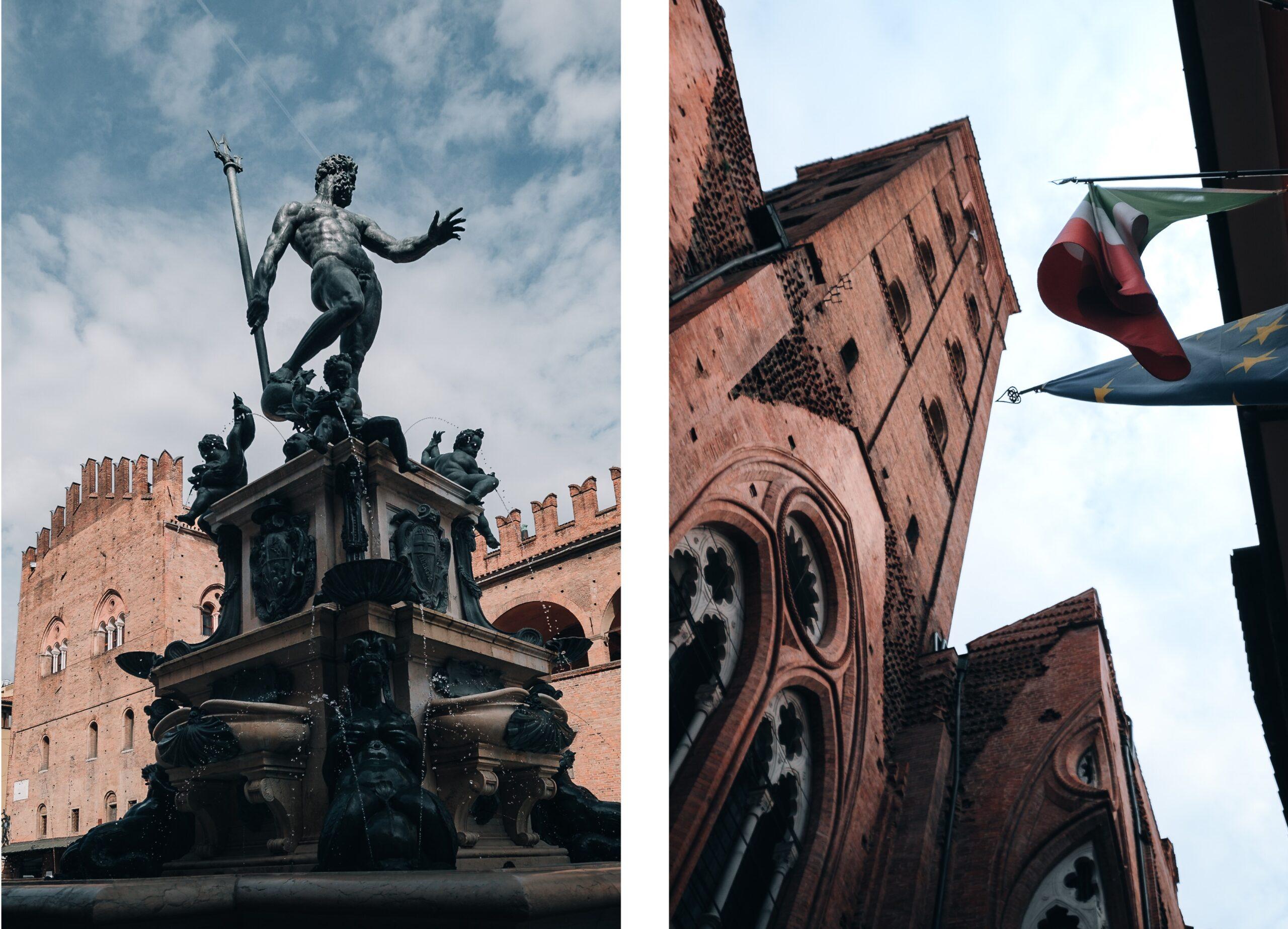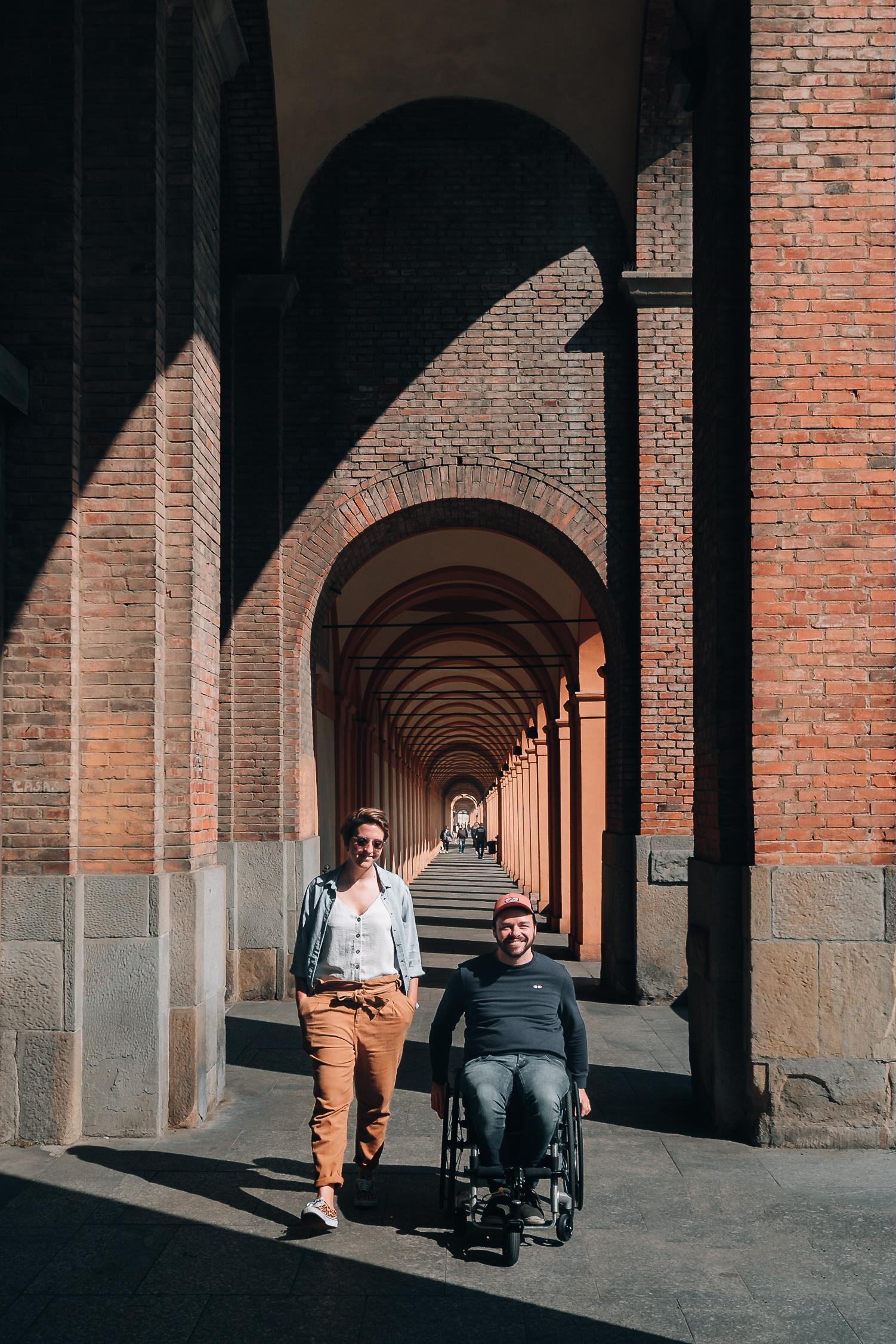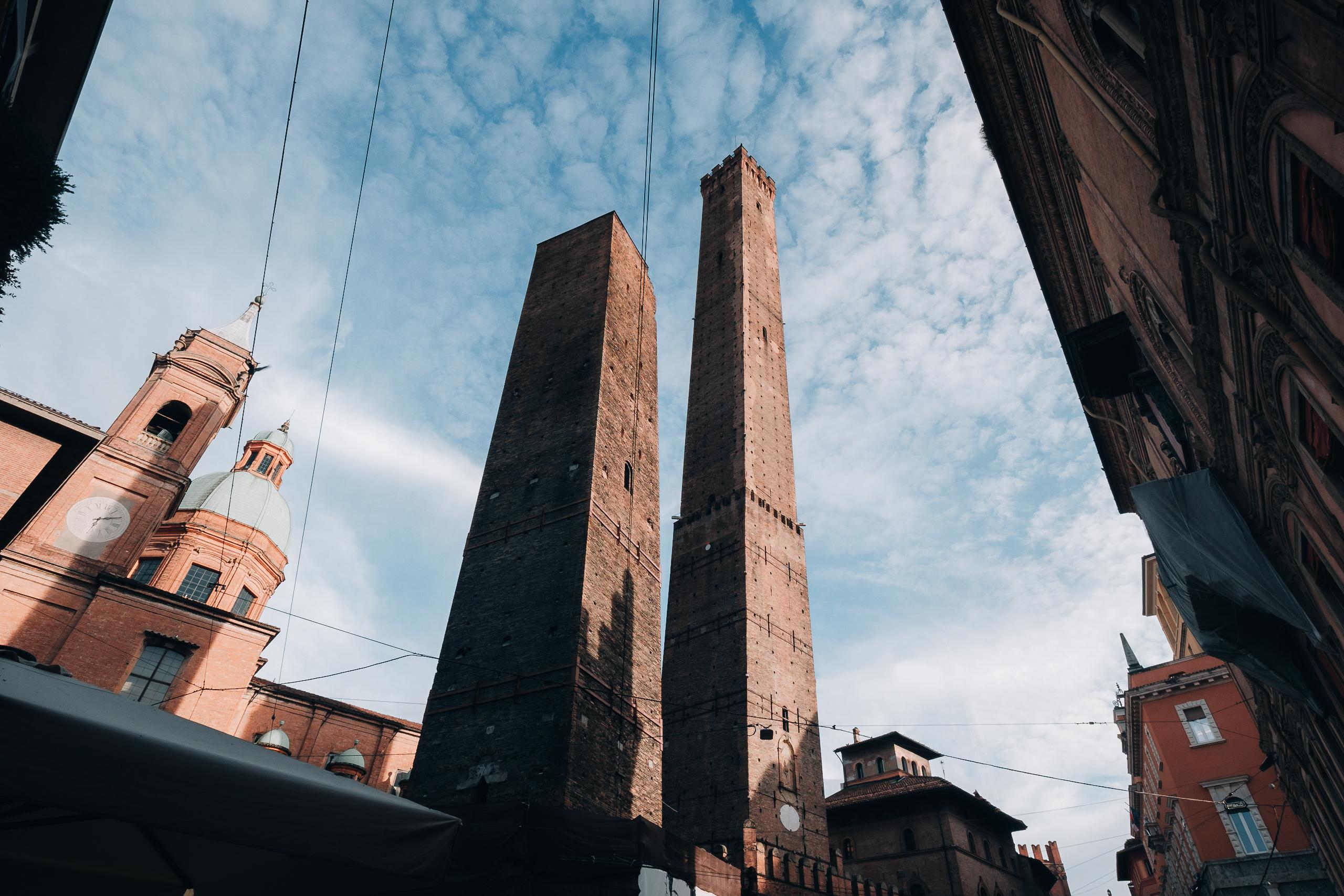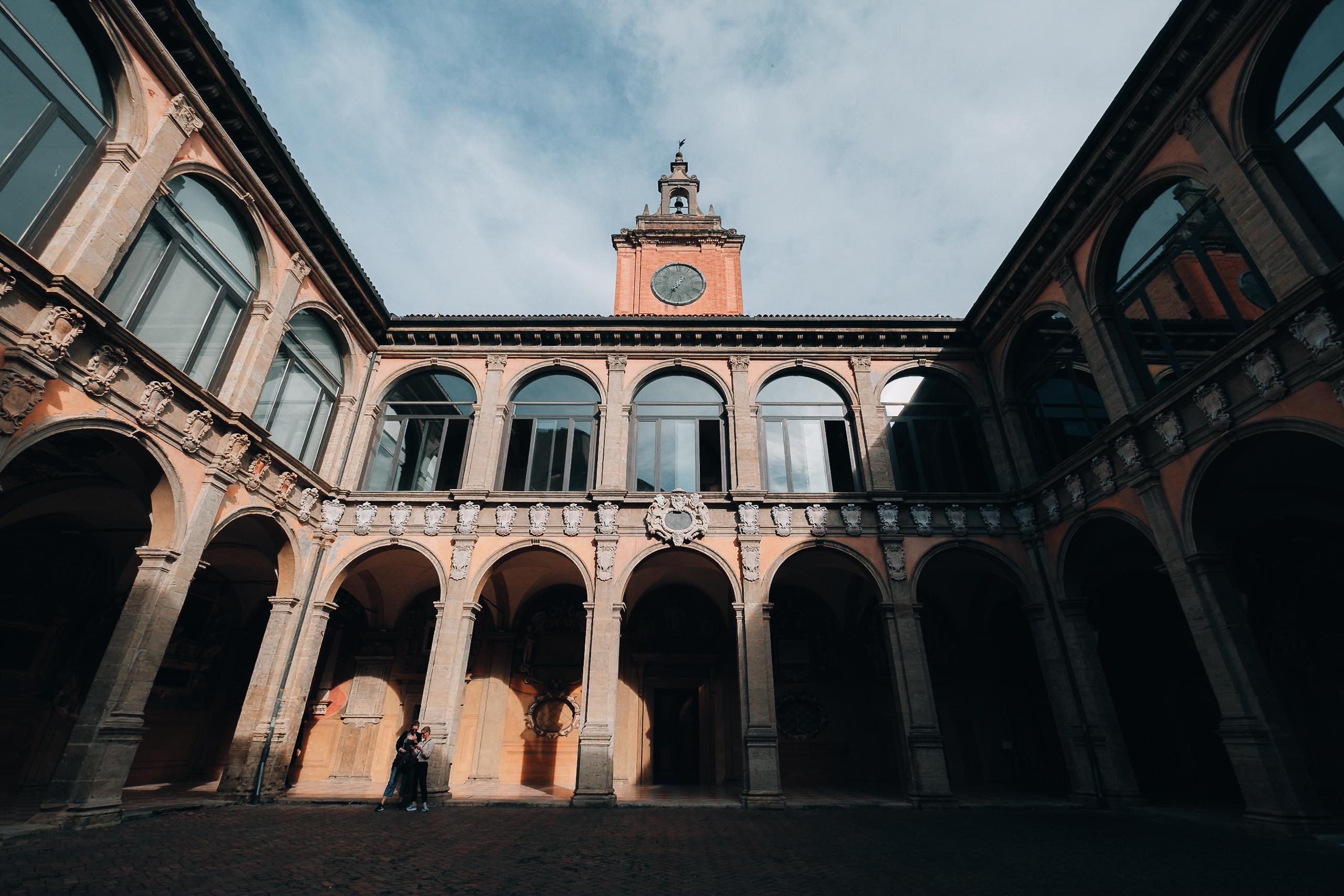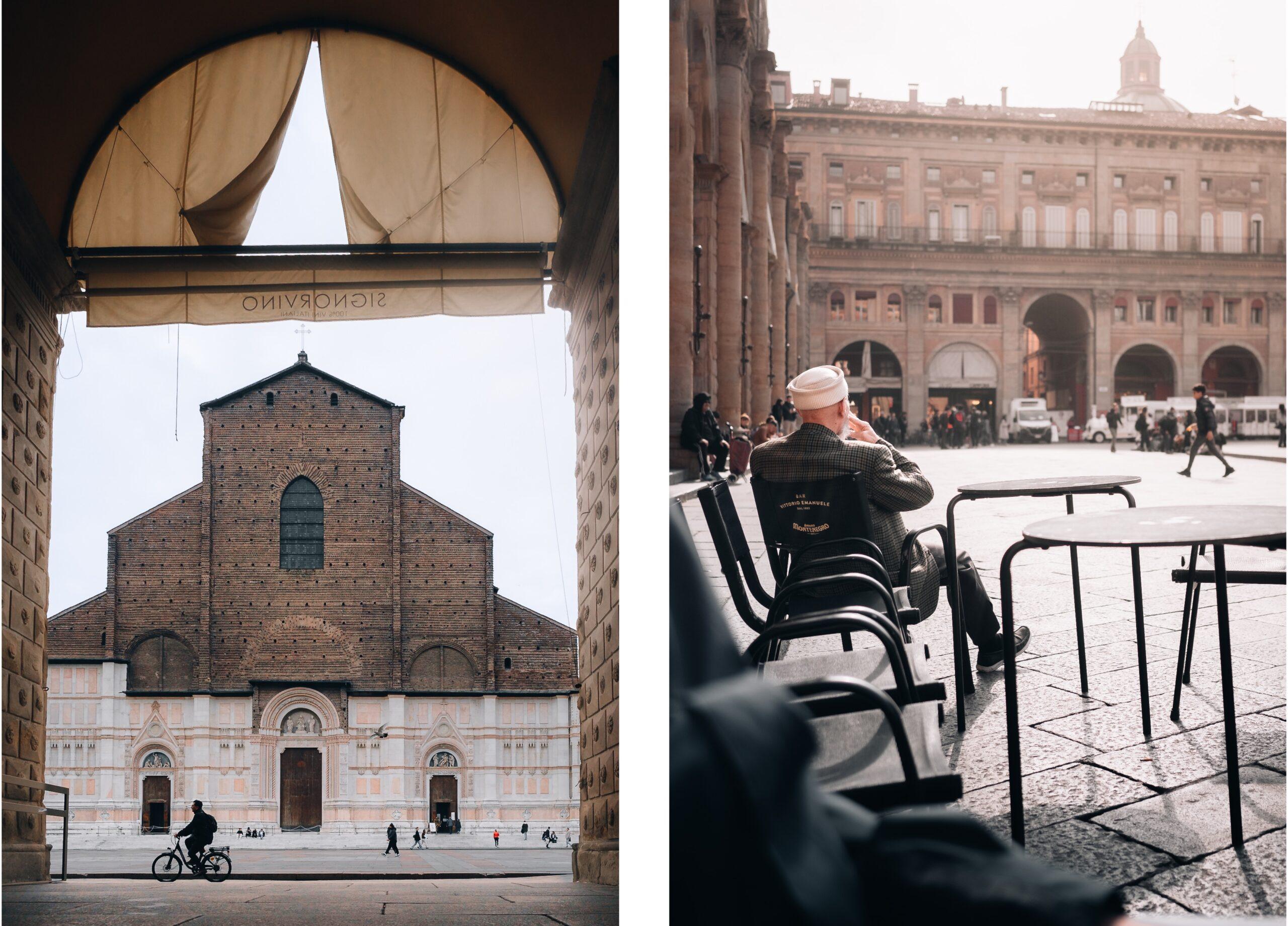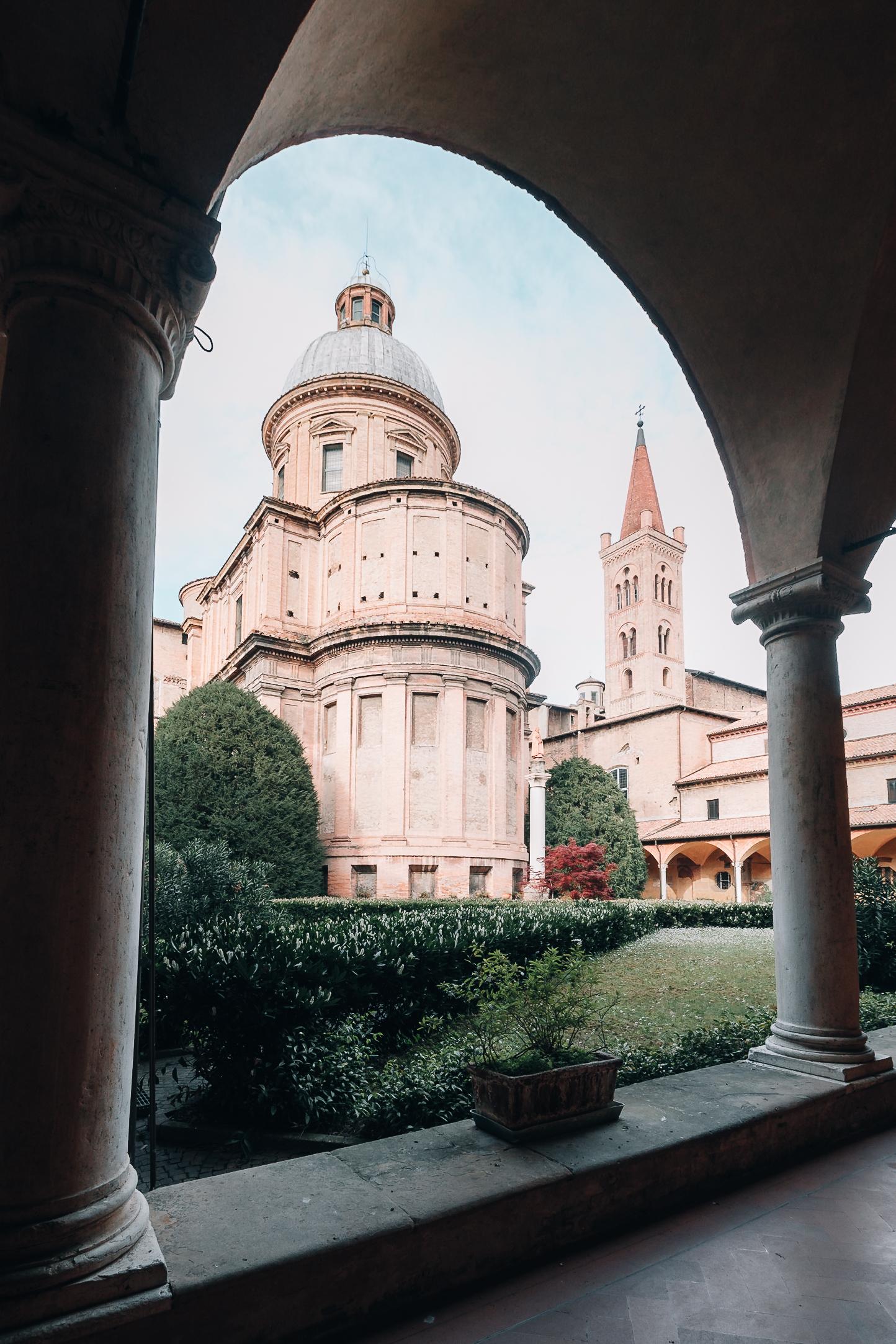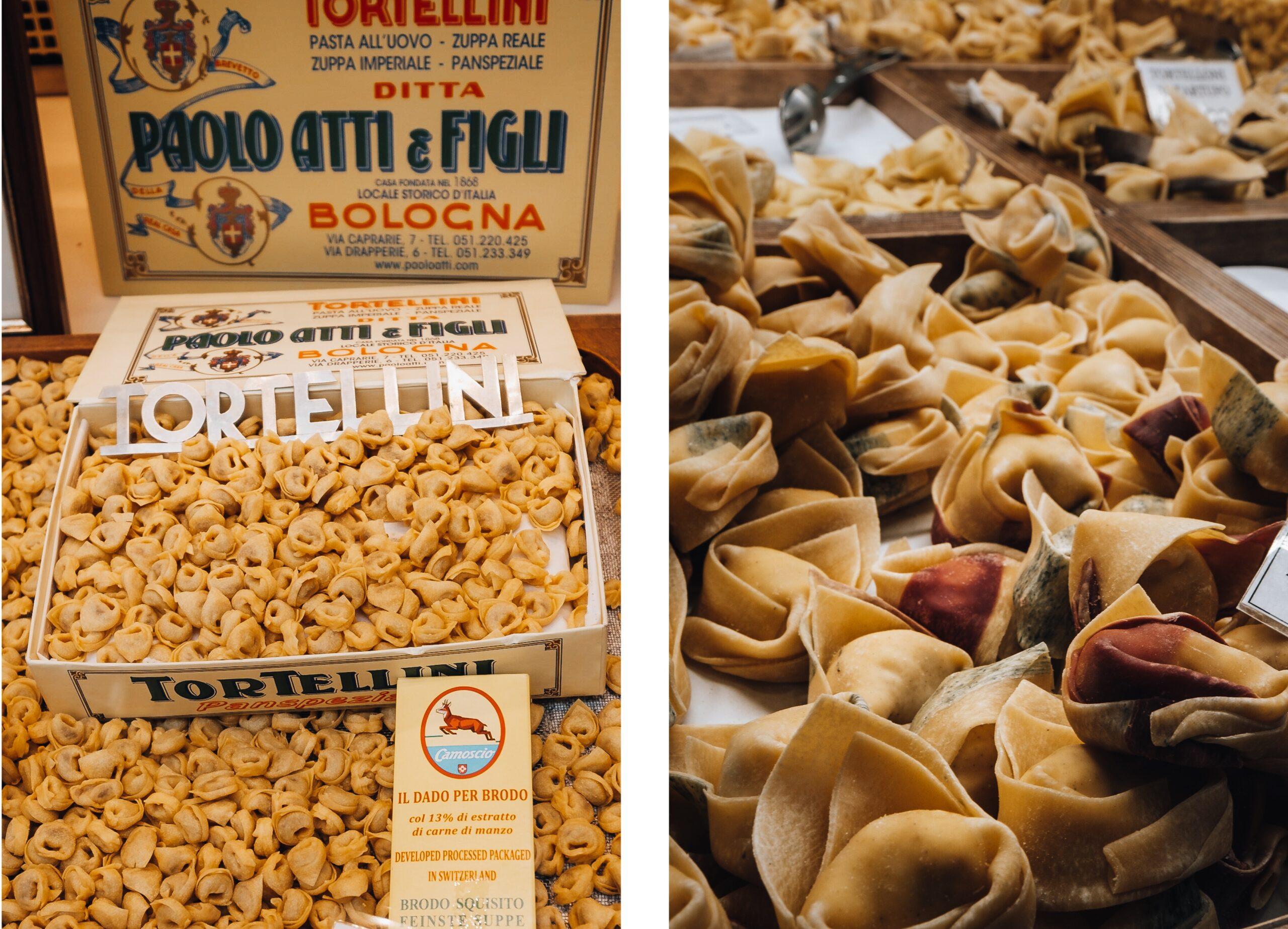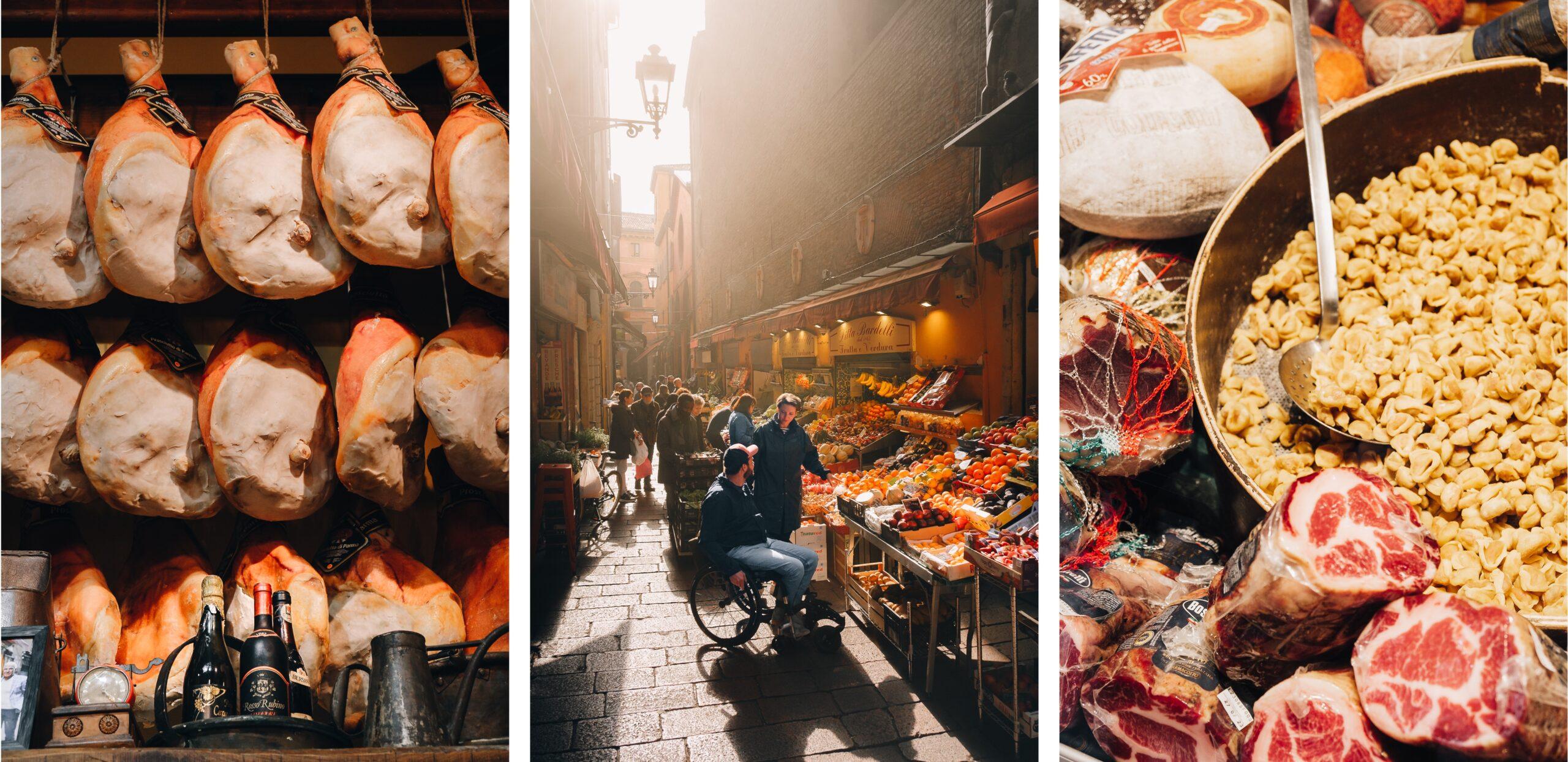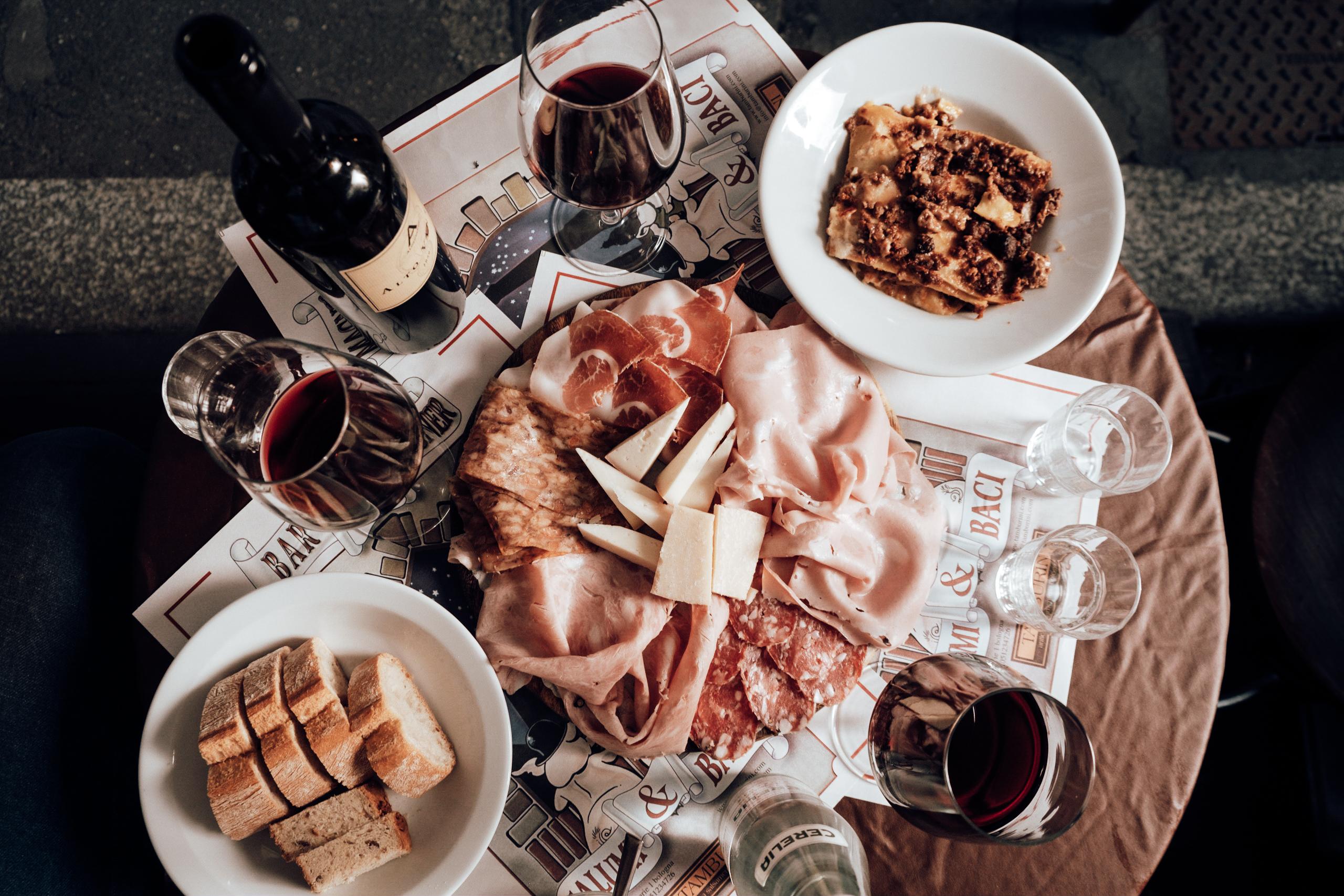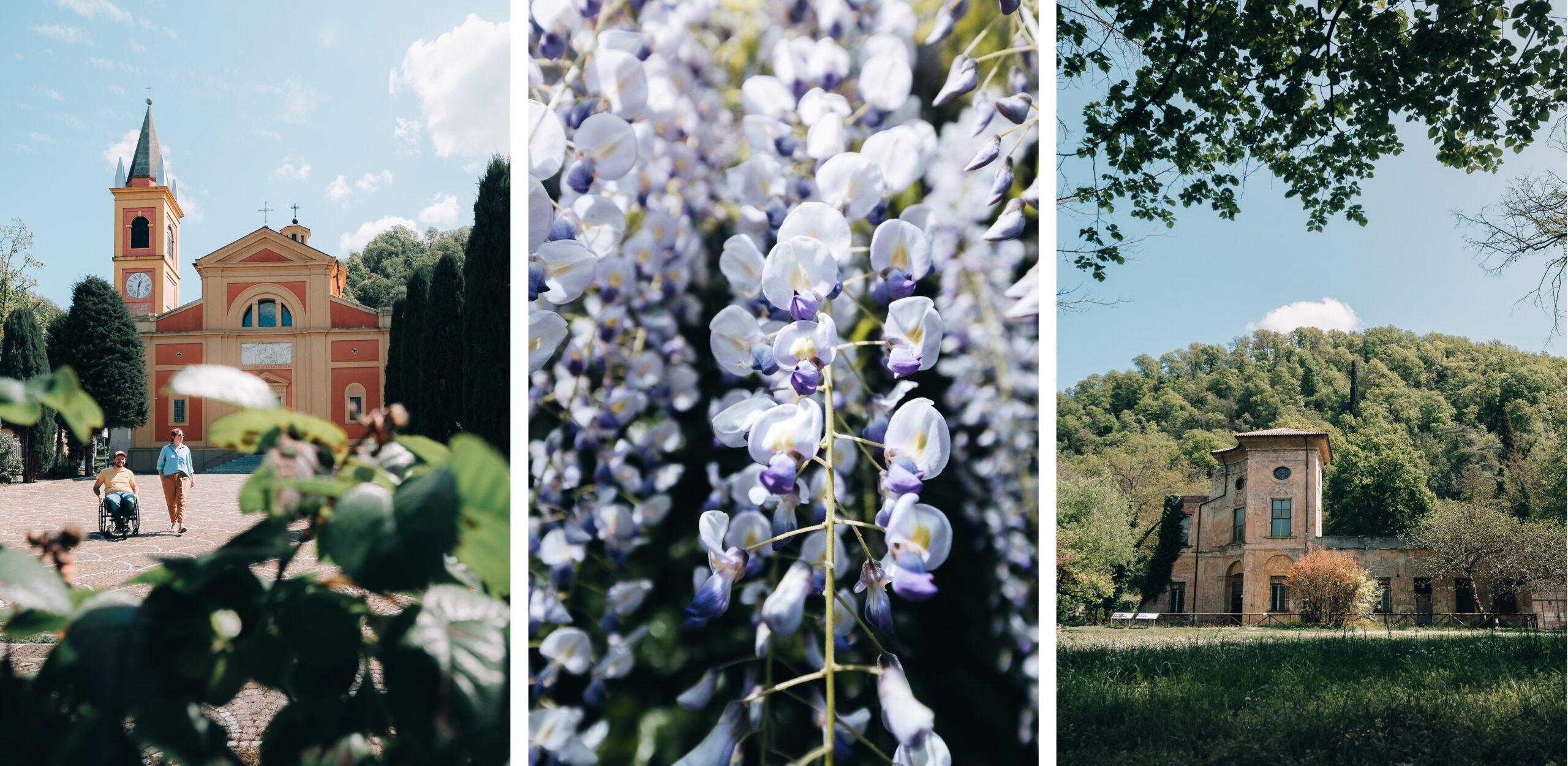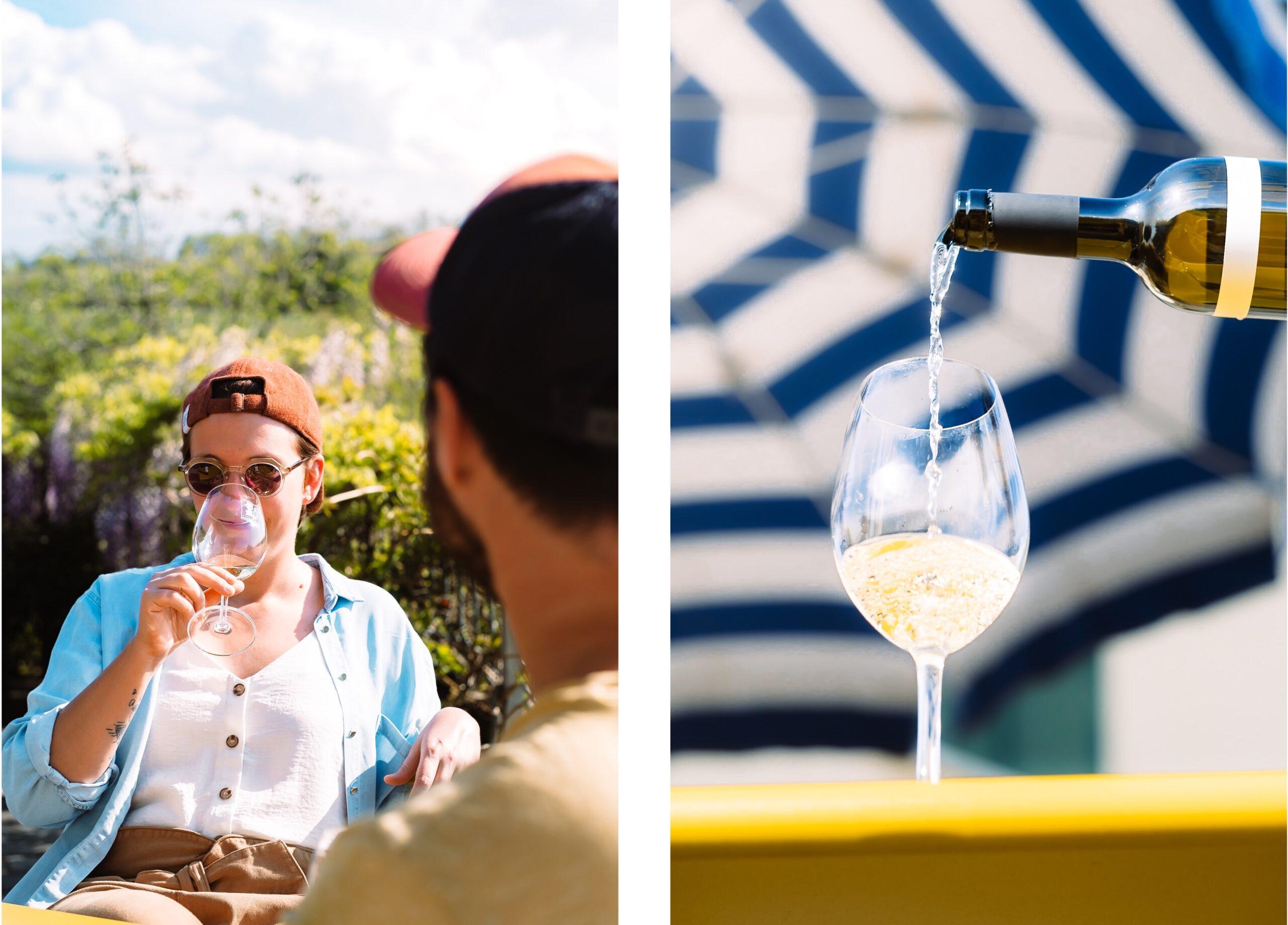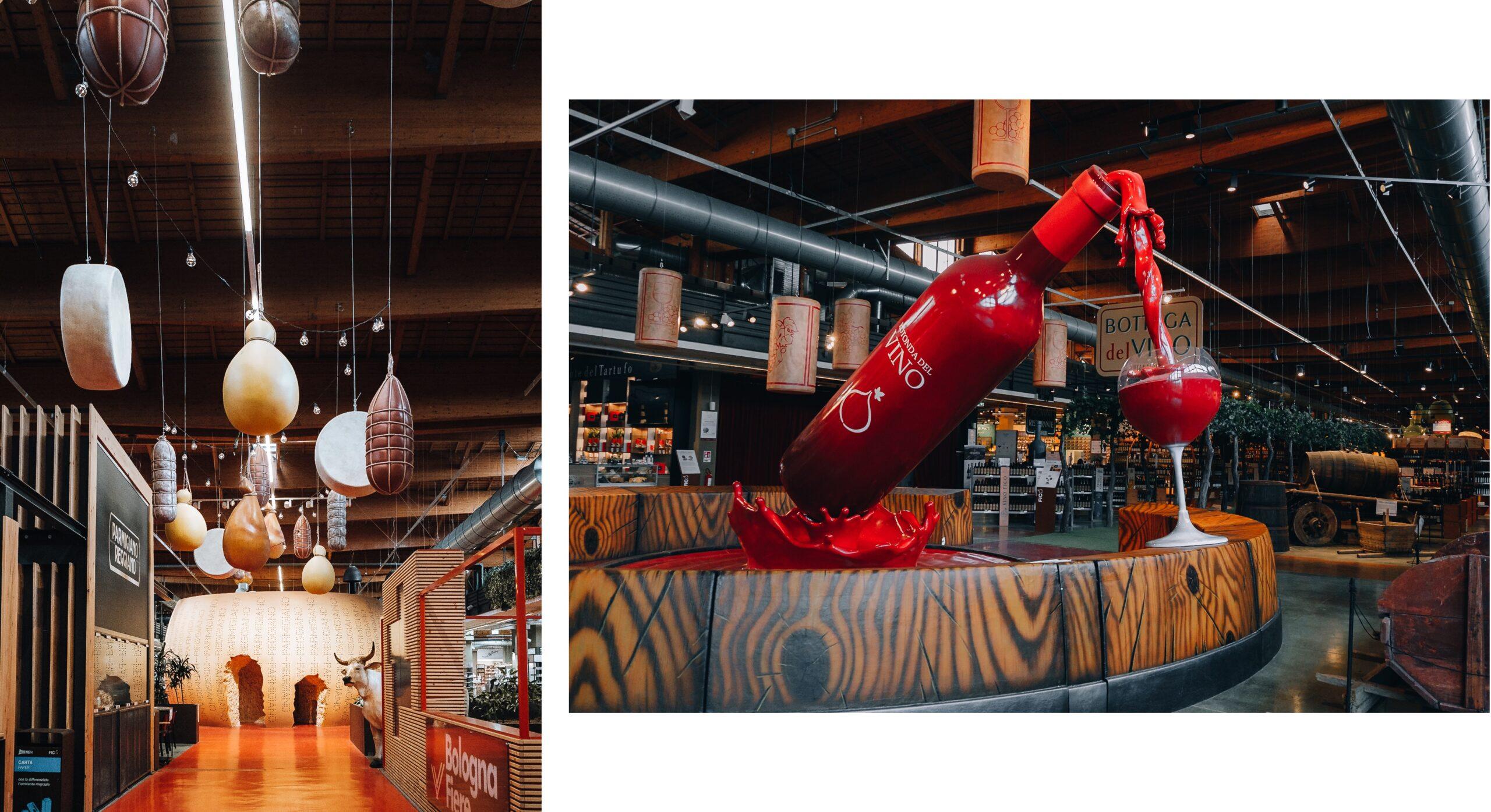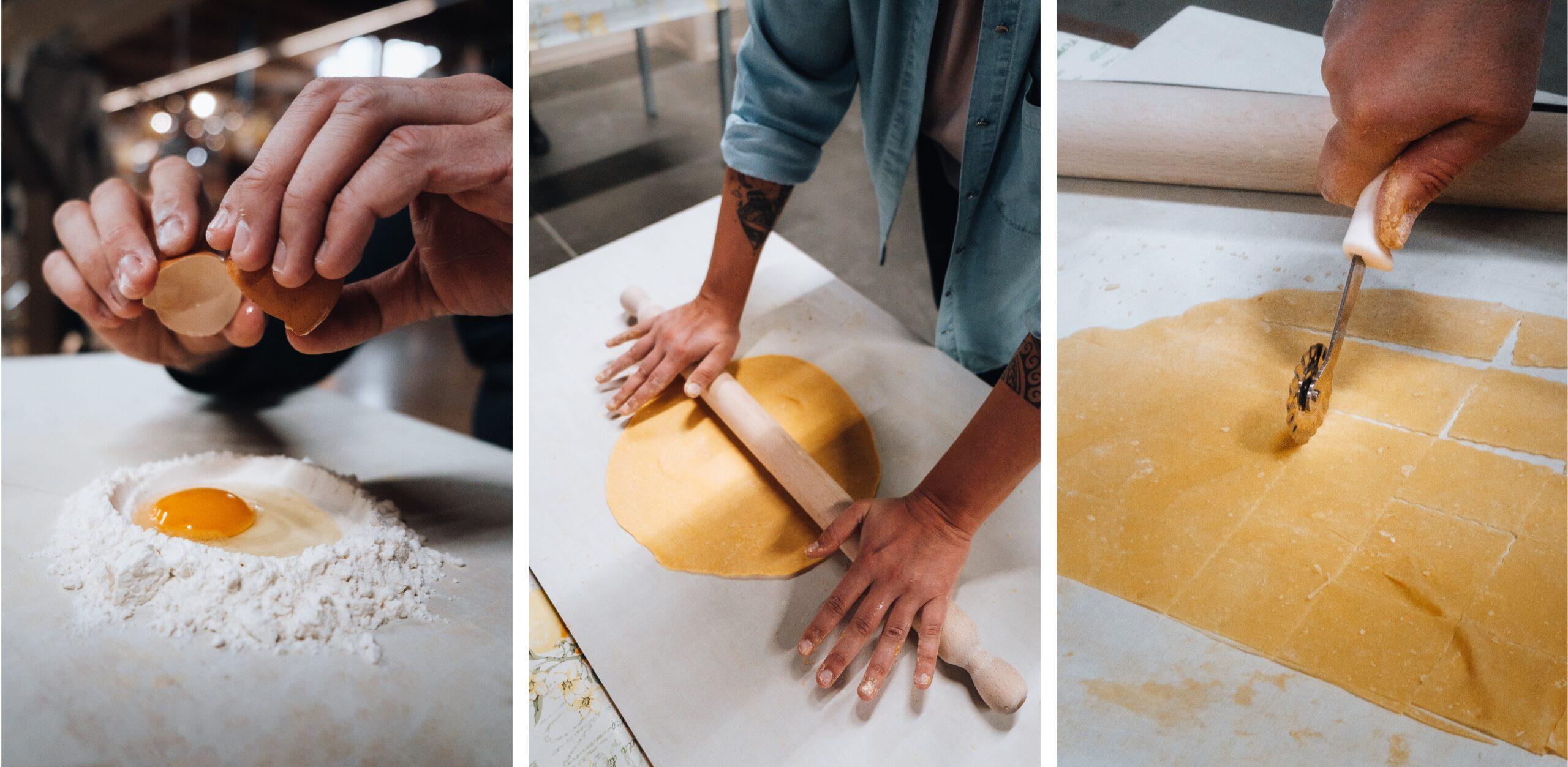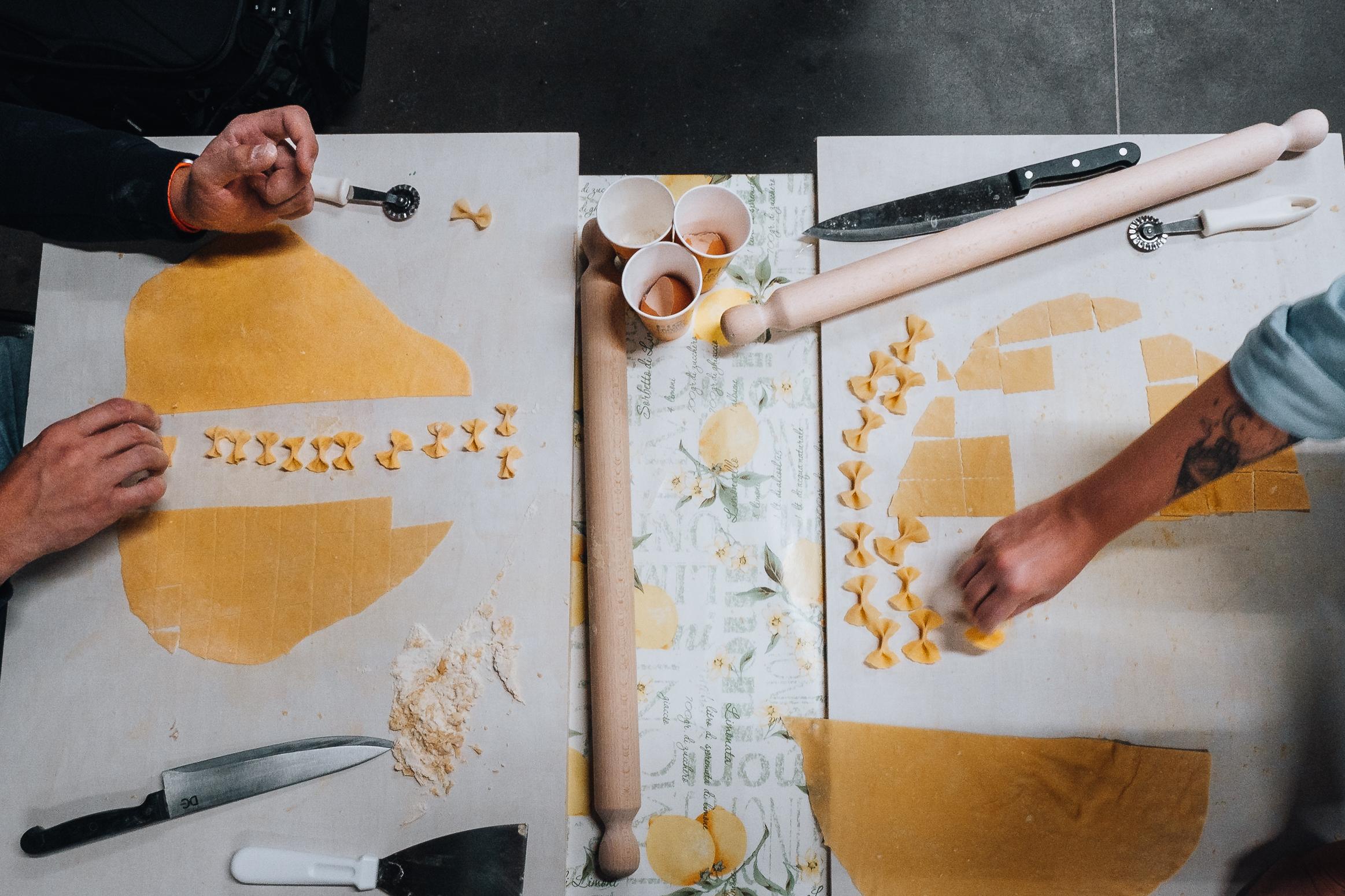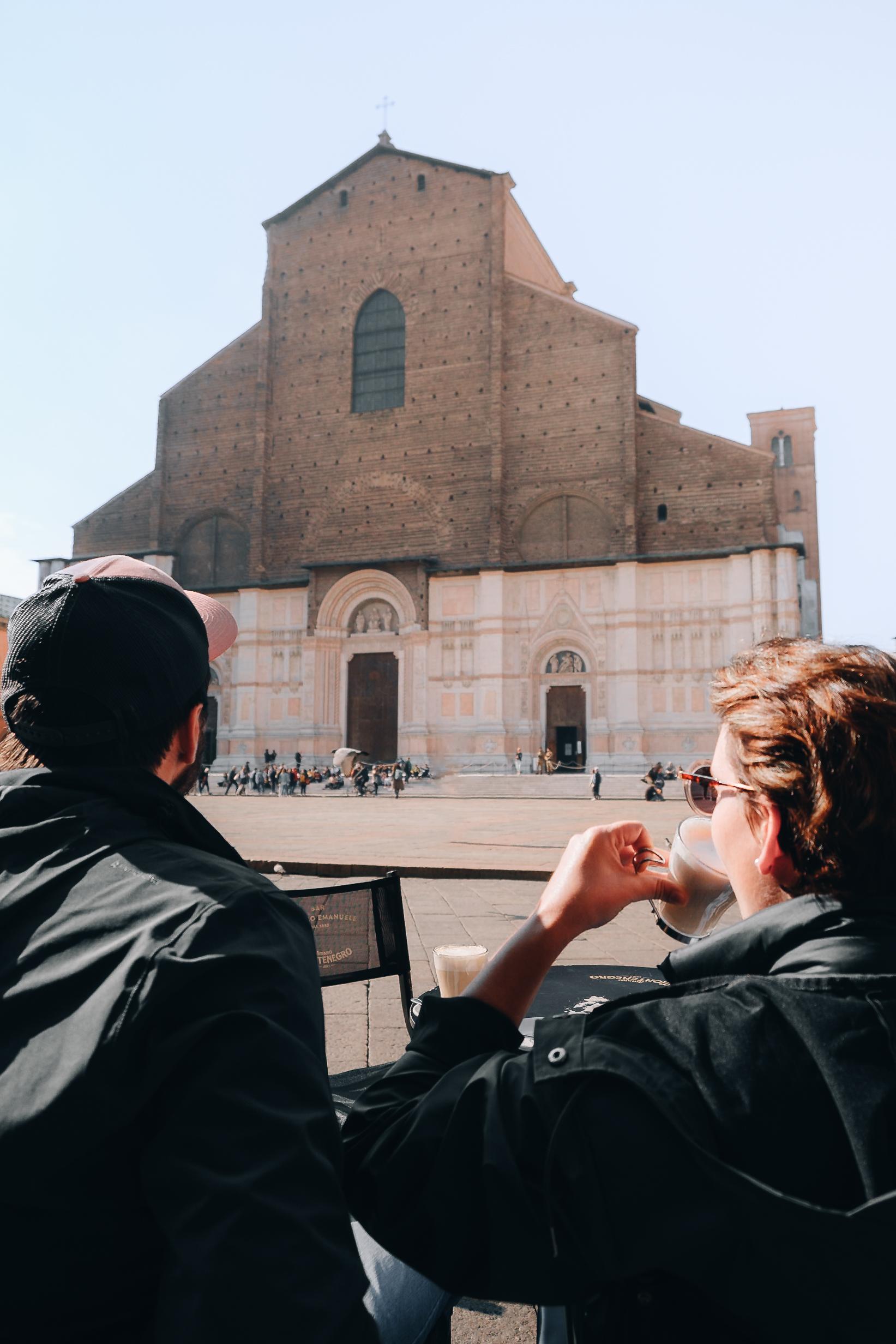OUR TRAVEL: 3 days, April 18 to 21, 2023
WHERE: In Bologna, capital of the Emilia-Romagna region
HOW TO GET THERE: You can get there by train from Paris. After travelling to Milan (approx. 7 hours), take the train to Bologna (approx. 1 hour).
WHEN TO GO? In Italy, we advise you to avoid the months of July and August, when the heat becomes overwhelming. Spring and the months of September-October are, in our opinion, better options.
WHY GO? One of the richest regions in terms of gastronomy. Bologna is the ideal place to try every pasta recipe!
GUIDED TOUR: We're not big fans of guided city tours, but this time we were more than pleasantly surprised! Catia Aliberti (+39 349 679 5790) accompanied us for 2 days and we more than enjoyed our time with her. She was very attentive to our requests for food and nature. We recommend you give her a call!
ACCESSIBILITY : Find all our addresses on our map Mapstr !
Bologna, in the heart of Emilia-Romagna
Located in the Emilia-Romagna region of northern Italy, Bologna is the perfect place to spend a few days! From its historic center to its countless trattorias and restaurants, Bologna offers a unique and memorable experience to all who visit. Wheelchairaccessibility is facilitated by numerous level passages to the main monuments, and some squares have been designed to offer flatter areas between the cobblestones. It's a real pleasure to get around the city!
Last but not least, Bologna's real plus? It's easily accessible by train from Paris with Trenitalia. In fact, in this articlewe give you all the tips you need to book your train tickets in Italy easily if you're in a wheelchair.
Three nicknames regularly accompany it: red, savvy and greasy! We tell you all about them in this article!
The red city
Bologna is often referred to as the "red city", due to the orange-red hue of its buildings. This unique characteristic can be appreciated on a walk or wheelchair ride through the city. Shades of red, such as cardinal, carmine, vermilion, scarlet and rust, create a remarkable harmony of colors. Even the tiles on the houses are red clay, adding to the overall aesthetic.
The origin of this predominance of red in Bologna's architecture is not clearly established, but one theory attributes this choice to Renaissance town planners. According to this theory, the color red symbolized the personality of the città: a city of courage, sacrifice, pain and passion.
Bologna's porticoes are undoubtedly the city's symbol. Their creation is linked to two major events:
- The creation of the university and the influx of students from all over Europe
- Enactment of a law making ownership of a dwelling with direct access to the street subject to taxation
eee
This new system enables homeowners to increase the surface area of their dwellings and obtain rent,students to be housed and all passers-by to be protected from rain and sun. Today, if you're a wheelchair user, it's also the best way to avoid the cobblestones of certain streets!
12 sections of the more than 40 kilometers of gantries have been listed as Unesco World Heritage Sites since 2021!
Between the rooftops, the Asinelli and Garisenda towers pierce the sky. They bear the names of the families who financed their construction between 1109 and 1119. In those days, building a tower was a sign of wealth: the higher it was, the richer it was!
The best-known of the two is the Garisenda tower. It has been leaning by almost 4° since the 14th century! That's almost as much as the Tower of Pisa!
The learned city
Bologna is also known as a "learned city", home to the world's oldest public university, founded in 1088. Thousands of students from all over Europe have sat on the benches of this prestigious institution, including such illustrious figures as Copernicus, three popes, Enzo Ferrari and Giorgio Armani.
The Palazzo dell'Archiginnasio now houses part of the school's library. The walls of the main courtyard are adorned with the coats of arms of the students' representatives.
Two downtown basilicas
The Basilica of San Petronio in Piazza Maggiore is Bologna's largest and most important church. You're probably wondering why the façade is in two pieces... When it was being built, there wasn't enough money to send the necessary quantity of marble!
At the beginning of the 16th century, the architect wanted to give it the shape of a Latin cross, but Pope Pius IV would have forbidden it to be any larger than Saint Peter's in Rome! Rather cheekily, the world's longest sundial, measuring 67.27 meters, has been installed in the main nave!
The Basilica of San Domenico is more discreet. If you're in a wheelchair, you're lucky enough to be able to access it via its cloister. A haven of peace in the middle of the city! The interior is all in white, and one of the most important features is the door through which you enter. Entirely made of wood, all the motifs are hand-crafted to the perfect dimensions and fit together without the use of glue!
The city of Grasse
Finally, Bologna is known as a "fat city" or as the pasta capital of Italy. Unlike the south of Italy, pasta here is made with eggs, and we're not going to lie to you: it's all to die for!
The best-known are the beef-filled tortellini! They come in every color and taste! All the restaurants offer the star recipes: in broth "al brodo", in sauce, just in oil... In short, you're sure to find what you're looking for!
When we think of pasta and Bologna, we obviously think of spaghetti bolognese. Did you know that this is a French adaptation? For Bolognese, it's sacrilege to mix these two ingredients! So you can order tagliatelle or lasagne al ragú, but never spaghetti!
Early in the morning, take time to stroll the streets around the Basilica of San Petronio. The colorful market stalls will make your mouth water!
When it's time for a bite to eat, we highly recommend two fully wheelchair-accessible addresses:
- Tamburini: This delicatessen offers a wide selection of local products (wines and charcuterie), not forgetting lasagne al ragú!
- Mercato di Mezzo: This covered market is ideal for discovering different Italian flavors. Mingle with the locals who've come to do their shopping and sit down at one of the tables to enjoy your finds!
Moving away from the city center
Along the Bologna canal
A 40-minute walk from the city center, in front of the entrance to Bologna's largest cemetery, is the canal that supplies the city with water.
From here, a fully wheelchair-accessible promenade runs along the canal for almost 4 kilometers. Forget cars and the hustle and bustle of market gardeners teasing passers-by, and make way for lush greenery.
At the far end, you'll reach theSan Martino church and the Parco Talon, where hikers following the Via Francigena pass by. If you're not too tired, we recommend heading to Casalecchio di Reno for a heart-warming pasta dish at Sfoglia Rina (full details below!).
The vineyards of the Manaresi estate
Just a 25-minute drive from the city center, Fabio welcomes you to his family's Manaresi winery. After a quick tour of the estate to get a view of the surrounding area (you can see Modena in the distance!), Fabio takes us into the wheelchair-accessible cellar, where the wines age at their own pace.
The real highlight of the visit is the tasting, which takes place on the terrace of the house, with the vines stretching as far as the eye can see! We particularly liked two wines:
- Pignoletto frizzante: a fresh, mineral white wine that becomes sparkling thanks to its unique fermentation process! Perfect with seafood!
- Rosato: it's the color of wine you wouldn't expect to see in a region known mainly for its powerful reds. Fabio is one of the few winemakers to have dared, and he's succeeded! Perfect for aperitifs and long summer evenings!
Eataly World, the temple of Italian gastronomy
On the other side of town, a completely different atmosphere awaits you. A huge warehouse has been converted into the world's largest Eataly. The name may not ring a bell, but this is a chain of stores offering restaurants and delicatessen stands selling Italian products. You'll find everything from charcuterie, wines and olive oils to cheeses, desserts and sugared almonds.
Each zone has its own stalls for discovering certain flavors, and restaurants are scattered throughout.
If you prefer, you can opt for a guided tour that includes 5 tastings!
While you're at Eataly World, why not take a class in making your own pasta dough? The recipe is simple: one egg, about 80 grams of flour. All that's left to do is mix them together to make a uniform dough. The most important thing is to make it as thin as possible!
I'll let you admire Myriam's talent for round dough. I won't tell you more about my performance... !
Starhotels Excelsior: The hotel is located just opposite the train station and less than 10 minutes' walk from the city center. Rates: Rooms start at €120 per night, excluding breakfast. Accessibility: The hotel's accessible entrance is right next to the main entrance. There's an intercom for calling reception. Don't hesitate to ring several times if no one answers. All common areas are wheelchair accessible. The breakfast room is in the basement and there is a ramp to the buffet. There are several PRM rooms in the hotel. The sleeping area is spacious and comfortable. The bathroom is also large, but unfortunately once you're sitting on the seat fixed into the wall, the faucet is on your back. This makes it difficult to shower alone. There are grab bars, however, including a vertical one in the shower.
Trattoria la Finestrella: Right next to Little Venice, a great place to enjoy pasta! Prices: Dishes from €10. Accessibility: Only the terrace is wheelchair accessible.
Le Stanze: This place has two rooms: the first is the bar with a decor worthy of an old palace and the second is the restaurant, a little less worked but you eat very well. Prices: from €13 for a dish. Accessibility: There are 5 big steps to get inside.
Tamburini: This delicatessen has a restaurant area and terrace. All products are local and they have dozens of wines from the region. Prices: Dishes start at €10, and the charcuterie/cheese boards are perfect for dinner. We recommend you drop in during the day to reserve a table on the terrace. Accessibility: the entrance to the restaurant is on one level, and the toilets are accessible and equipped for people with reduced mobility. The terrace is equipped with barrels and high chairs. If you prefer, you can sit on the sidewalk next to the first barrel without having to worry about the height.
Mercato di Mezzo: A covered market where you can do your shopping or sample dishes made right on the spot. It's all good! Prices: Each stall offers dishes or menus. Accessibility: The entrance to the market is on one level. The aisles are a little narrow, but people have room to step aside to let you pass. The toilets are accessible and adapted for people with reduced mobility. There's an elevator upstairs.
Caffè Vittorio Emanuele: The best spot to admire the Basilica on Piazza Magiore. The sun arrives early in the morning to warm you up with your coffee. Accessibility: Only the terrace is wheelchair accessible.
Canton de' Fiori: Right next to the Piazza del Nettuno, a café that does the trick when it comes to quenching your thirst. Prices: a few euros for a very good latte macchiato. Accessibility: The entrance to the restaurant is on one level, but the toilets are in the basement.
Sfoglia Rina: This pasta institution has two addresses in Florence. We tried the original in Casalecchio di Reno, the other is in the the center. Try the house's timeless creations or those in season... The flavors are incredible! Prices : Dishes start at €10. Accessibility: The entrance to the restaurant is on one level, via their Carina pasta bar. Toilets are wheelchair accessible and there are grab bars.
Giuseppe Giusti Balsamico: Based in Modena, this brand has a store in downtown Bologna. The balsamic vinegar is delicious, and you can taste 6 or 7 different ones to get an idea. There are several bottle sizes to suit everyone!
At Tamburini and elsewhere, you can buy cold meats and cheeses under vacuum for easy return transport!
Basilica di San Petronio: Bologna's main basilica. It's original in every way: its unfinished façade and, inside, a sundial! Accessibility: there's a ramp to the right of the façade. There are a few stones at the start, but they're easily passable.
Basilica di San Domenico: This basilica is dedicated to the Dominican order, and its cloister is magnificent! Accessibility: To the right of the main entrance, a ramp leads to the church through the cloister, which is normally closed to visitors. Please ask at reception if you can get through.
Biblioteca Salaborsa: The library is housed in the former Bologna Stock Exchange. Accessibility: Several ramps provide access to the interior. On a long day out sightseeing, don't hesitate to enter and use the accessible toilet facilities. At the far left of the main hall, go through the reading room and turn left. The person in charge of the toilets will give you the key.
Walk along the canal: Away from the town center, right next to the huge cemetery, a long, completely flat promenade takes you to Parco Talon and the San Martino church. Accessibility: If you're heading for Casalecchio di Reno, the Gran Caffe has wheelchair-accessible toilets on the way. All you need is a little help to get in, as the ramp is a little steep.
MAMbo - Museo d'Arte Moderna di Bologna : A fine museum of modern art featuring local artists. Admission: €6 per person and free for PRMs and one accompanying adult. Accessibility: The museum is fully wheelchair-accessible, and there are accessible toilets.
Manaresi winery: Enjoy a green moment in the heart of the vineyards. Rates: A visit to the vineyards and a tasting of 3 wines costs €25 per person. They take place on Wednesdays and Saturdays at 5 or 6 pm. Accessibility: The estate is wheelchair accessible. There is some gravel on the main road, which can be a little thick in places. The tasting area is entirely wheelchair accessible. Unfortunately, the toilets are not really accessible. There's a step up and the doors are quite narrow.
FICO - Eataly World: Just outside Bologna, the temple of Italian gastronomy. Here you can discover many specialties and take part in classes to make pasta, pizza or gelato! Prices: Admission is €10, 5 tastings during the visit cost €29, and a class costs €39. We advise you to book online before you go, as on-site prices are more expensive. Accessibility: The site is fully wheelchair-accessible, and the toilets are accessible and equipped.
Bologna impressed us with its wheelchair accessibility and the ease of access to even the oldest buildings for people with reduced mobility. The charm of its narrow streets and lively squares , not to mention its incomparable gastronomy, did not leave us unmoved! We'll be back with pleasure, but for now, our train journey continues. So off to Florence!

